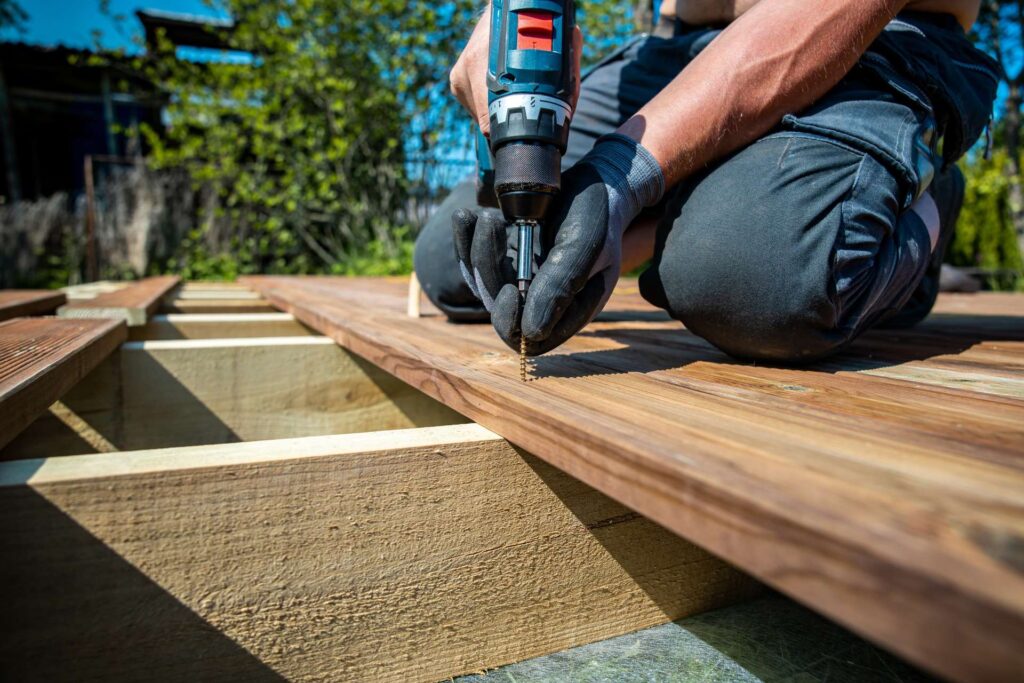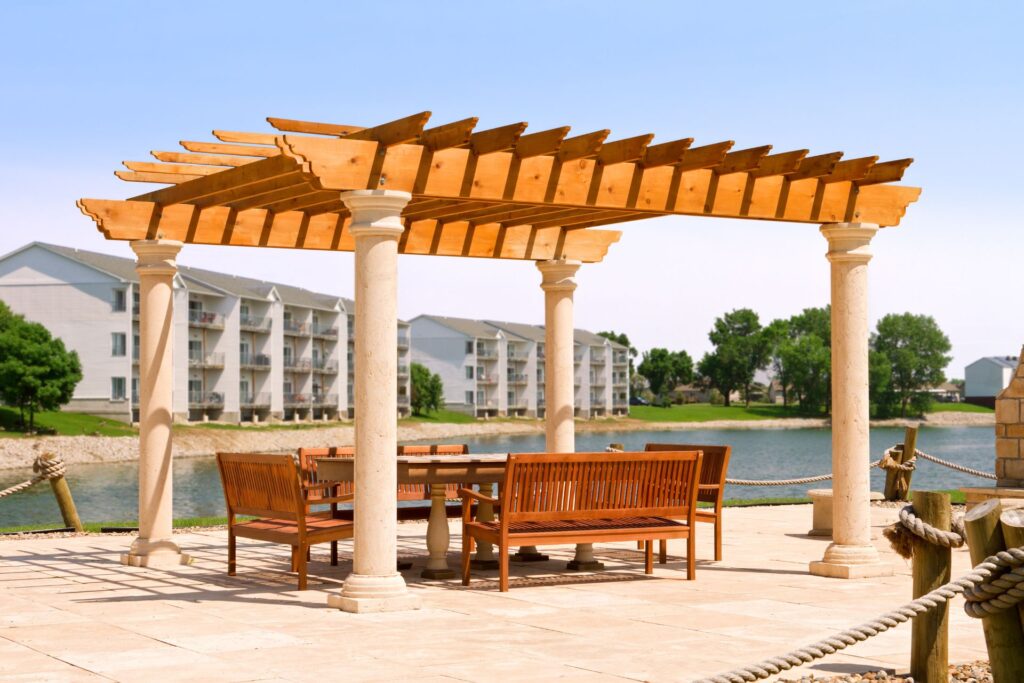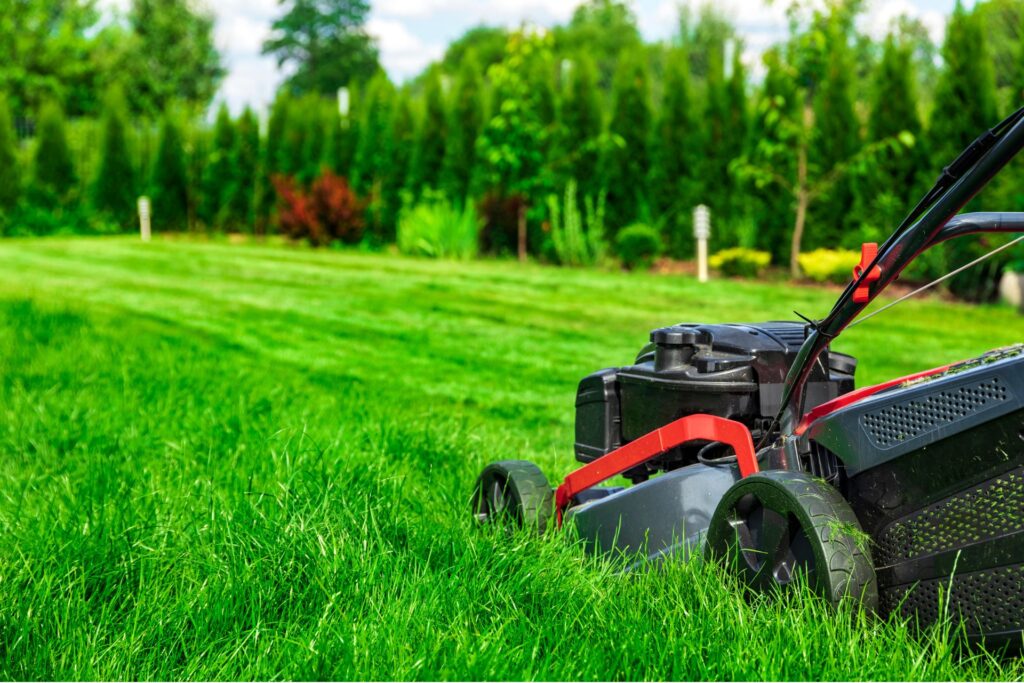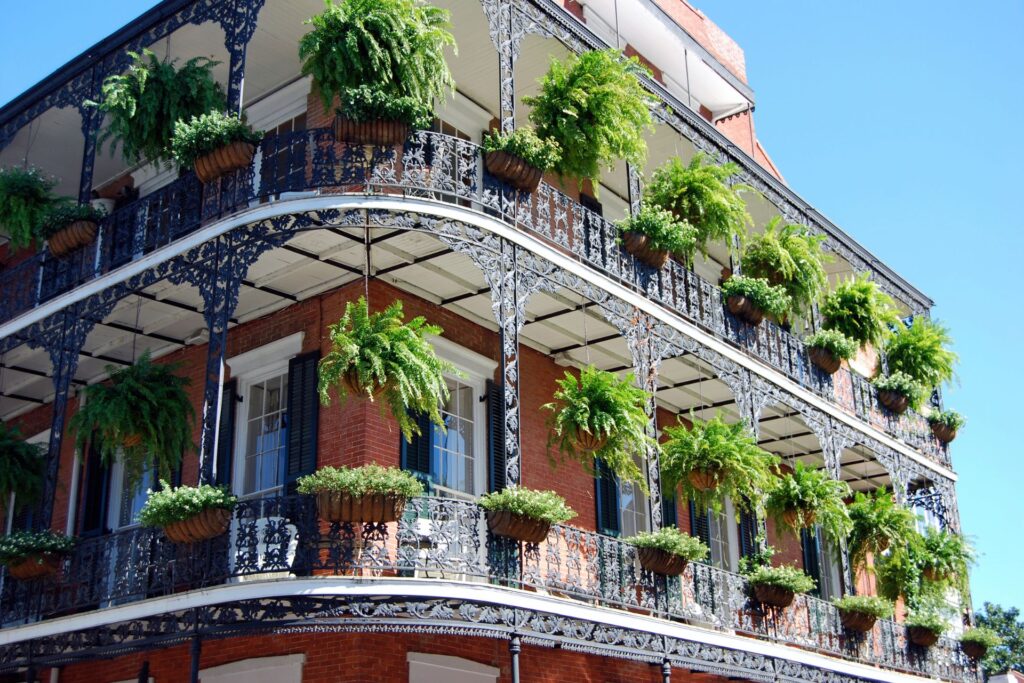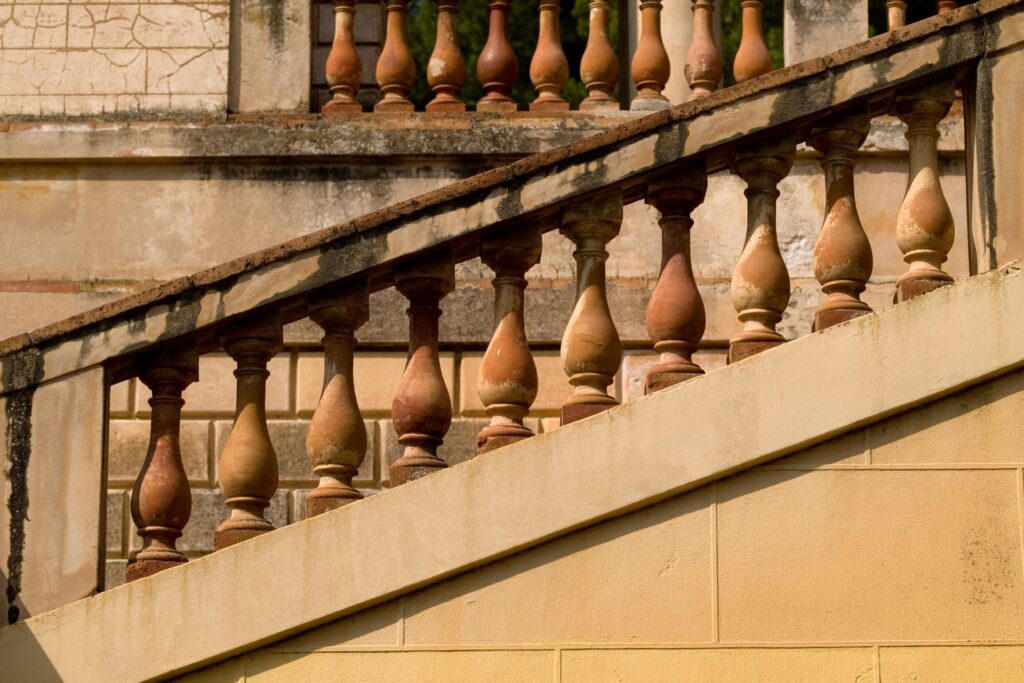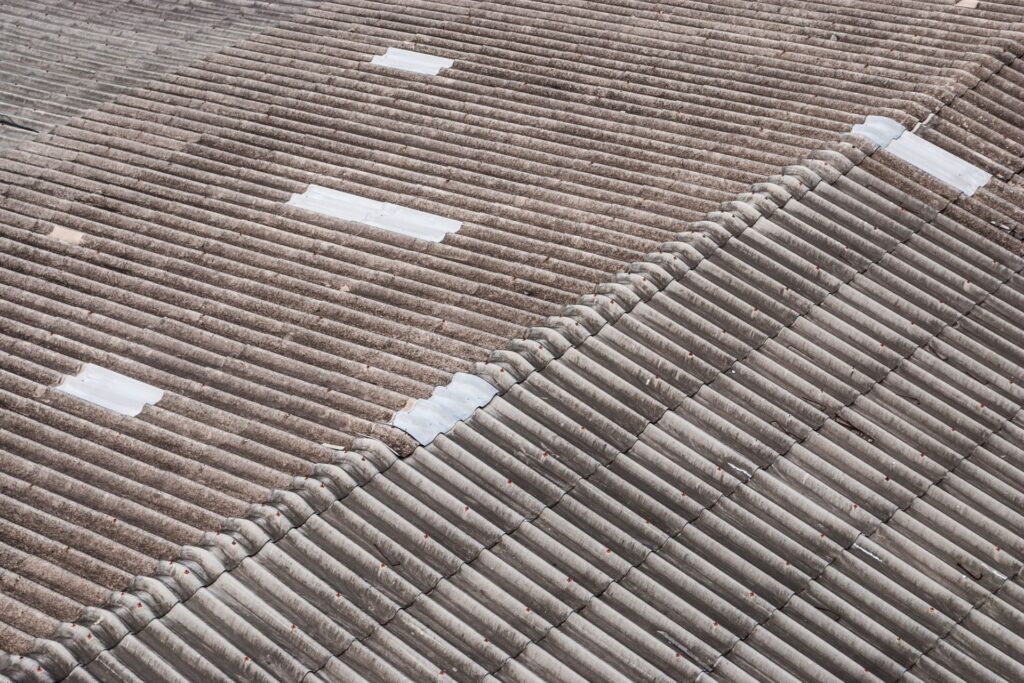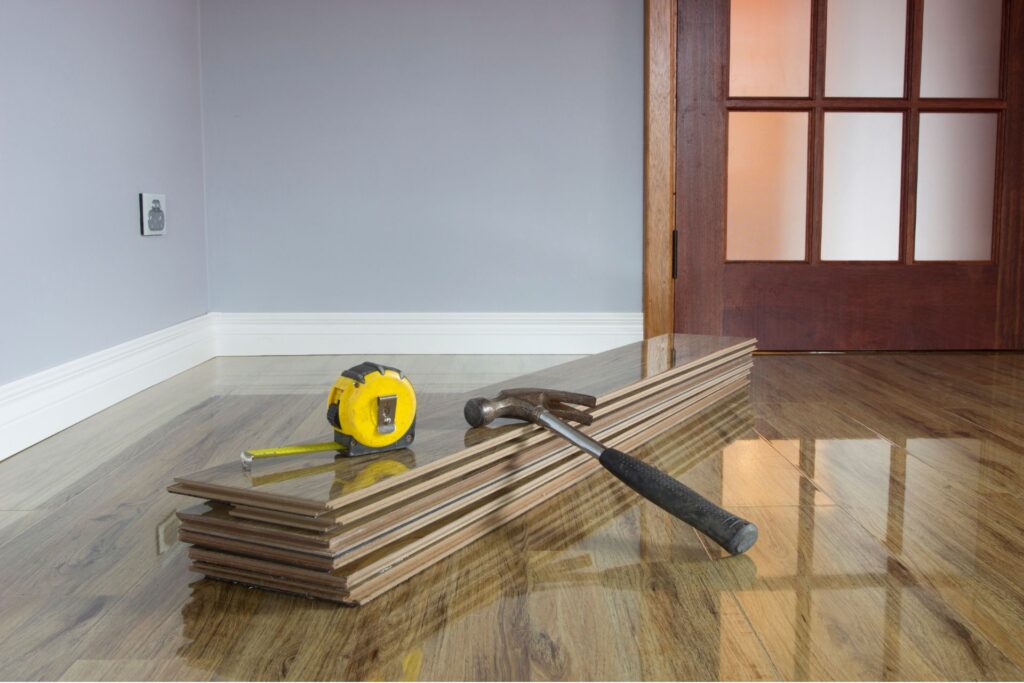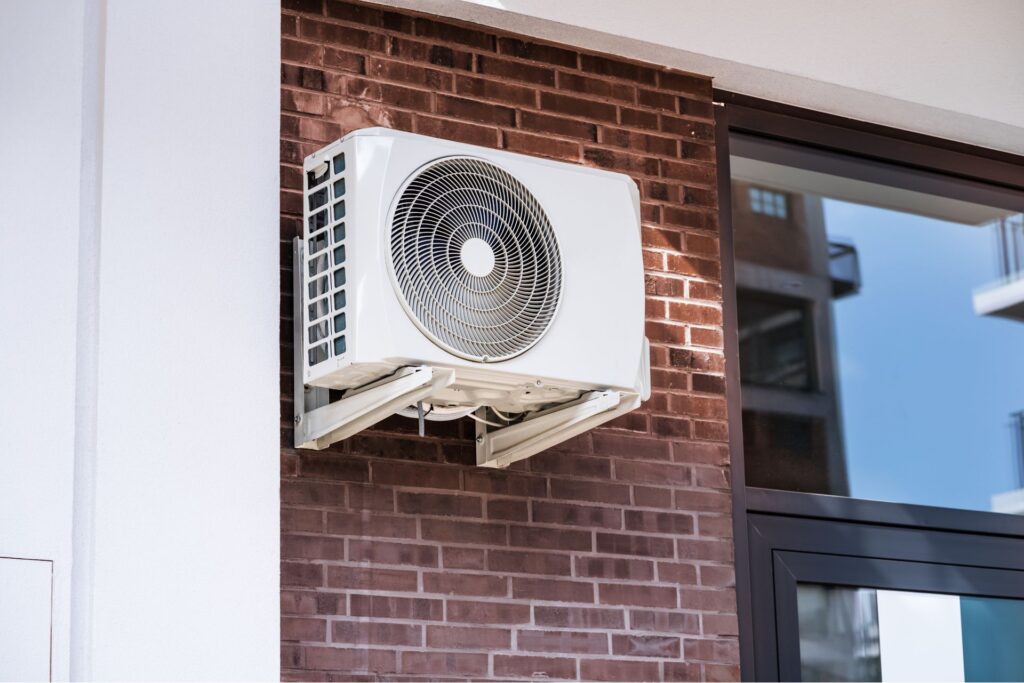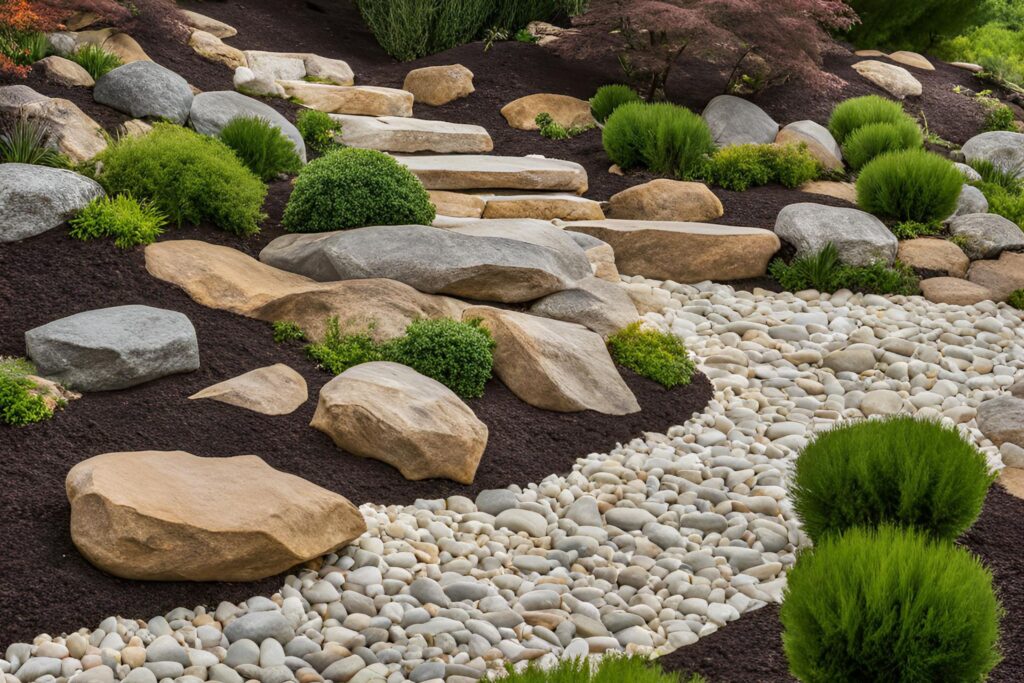Welcome to our comprehensive guide on the best wood for decks in New Zealand, where we help you navigate the important decision of choosing the right timber for your outdoor space. With NZ’s diverse climate, from the sun-drenched coasts to wetter, cooler regions, selecting the ideal wood Mitre 10 – Decking Wood Options in New Zealand is crucial to ensuring your deck’s longevity and beauty. In this post, we’ll explore the top wood options available in New Zealand, weighing their durability, maintenance needs, and aesthetic appeal, so you can make an informed choice that suits your style, budget, and environment. Let’s dive in to find the perfect timber for your Kiwi deck.
The best wood for decks in New Zealand includes durable hardwoods like Kwila and Vitex, which are highly resistant to weathering and insect damage, making them ideal for NZ’s harsh climate. Treated Radiata Pine is a popular, affordable option for those seeking a cost-effective solution, while locally grown Macrocarpa offers natural resistance to decay. Each wood type varies in durability, maintenance needs, and aesthetic appeal, making it important to choose based on your location, budget, and personal preferences.
- Why Choosing The Right Wood Matters For Your Deck
- Factors To Consider When Choosing Deck Wood In NZ
- Top Wood Options For Decks In NZ
- Pros And Cons Of Each Wood Type
- Tips For Maintaining Your Wooden Deck In NZ
- Sustainability And Sourcing Your Deck Wood In NZ
- Cost Considerations For Deck Building In NZ: A Complete Guide
- FAQs: About Best Wood For Decks NZ
- Conclusion
- Find A Professional Decking Company Near You!
Why Choosing The Right Wood Matters For Your Deck
When it comes to building a deck, choosing the right wood is one of the most critical decisions you’ll make. The type of wood you select not only affects the overall look and feel of your deck but also its durability, maintenance needs, and long-term value. In New Zealand, where decks are exposed to a range of weather conditions, from intense sunlight to heavy rainfall, selecting a high-quality, appropriate wood can significantly impact the lifespan and performance of your deck.
Durability and Longevity
Durability is perhaps the most important factor to consider when choosing wood for your deck. New Zealand’s climate can be harsh, particularly in coastal regions where salt air and moisture levels are high. Some woods are naturally more resistant to these environmental stressors. Hardwoods like Kwila and Vitex are known for their exceptional durability, providing long-lasting performance with minimal warping, cracking, or decay. On the other hand, softer woods like treated Radiata Pine can be more affordable, but they may require additional treatments and maintenance to ensure they last as long. Investing in a durable wood upfront can save you money and effort over time, as it reduces the frequency of repairs and replacements.
Maintenance Needs
The type of wood you choose also has a direct impact on how much maintenance your deck will need over the years. Certain woods, like Kwila and Garapa, are naturally resistant to rot, mold, and insect infestations, which means they require less frequent sealing and cleaning. In contrast, softer woods or untreated options are more vulnerable to moisture damage, which can lead to rot and mold if not properly maintained. This means that if you opt for a less durable wood, you’ll need to be prepared to invest time and money into regular upkeep, such as sealing, staining, and cleaning, to protect your deck from the elements. Understanding the maintenance needs of each type of wood will help you balance long-term care with your initial budget.
Aesthetics and Home Value
Beyond durability and maintenance, the aesthetic appeal of your deck is another key factor. The right wood can enhance the visual appeal of your outdoor space and add significant value to your home. Hardwoods like Vitex and Purpleheart, for example, offer rich, natural colors that age beautifully over time. The choice of wood can also impact how your deck integrates with the overall design of your home and landscape. A well-chosen wood that complements your home’s style can make your outdoor area more inviting and visually appealing, which can be a big selling point if you ever decide to put your home on the market. On the other hand, a poorly chosen wood that weathers badly or requires frequent repairs can detract from your home’s curb appeal.
Choosing the right wood for your deck is about more than just aesthetics. It’s a decision that will impact the longevity, maintenance needs, and overall value of your outdoor space. By investing in a high-quality, durable wood that suits your climate and lifestyle, you can enjoy a beautiful, long-lasting deck that enhances both your home’s appearance and its resale value.

Factors To Consider When Choosing Deck Wood In NZ
When choosing the right wood for your deck in New Zealand, there are several critical factors to consider. Each factor plays an essential role in ensuring that your deck not only looks great but also stands the test of time in NZ’s unique environment. Let’s dive into these factors to help you make an informed decision.
Climate Suitability
New Zealand’s climate is incredibly diverse, ranging from the damp, temperate conditions of the West Coast to the drier, more moderate climates in areas like Canterbury and Hawke’s Bay. When selecting wood for your deck, it’s important to consider how well the material will perform under local weather conditions.
If you live in coastal areas where the salty air and moisture are constant, hardwoods like Kwila or Vitex are ideal because they have natural resistance to decay and moisture absorption. On the other hand, if you’re in a region that experiences high UV exposure, such as Auckland or Nelson, choosing a wood that withstands sun damage is key. Hardwoods generally fare better in these conditions compared to softwoods, which might fade or warp over time. Understanding your local climate will help you choose a wood that stays strong and beautiful in the face of environmental challenges.
Durability and Resistance
The durability of your decking material is crucial in determining how long it will last without succumbing to decay, insects, or weather damage. Woods like Kwila and Vitex, for instance, are known for their natural toughness and resistance to these issues. These hardwoods are particularly popular in New Zealand due to their ability to withstand both the elements and common pests, such as termites.
However, it’s not just about withstanding the weather—durability also includes how well the wood holds up against daily wear and tear. High-traffic areas, or decks exposed to frequent use, benefit from denser woods like Garapa or Purpleheart, which are less likely to scratch or dent. On the other hand, softwoods like Radiata Pine, though treated to resist decay, might not offer the same level of protection from impact or heavy use over time.
Choosing a wood that is naturally resistant to decay and insects will reduce the need for chemical treatments and extensive upkeep, providing long-term value for your investment.
Maintenance Levels
Another important factor when selecting deck wood is the level of maintenance it will require. Some woods demand more frequent care to maintain their appearance and integrity, while others need minimal upkeep.
For instance, Kwila and Vitex, despite being durable hardwoods, may require regular oiling to maintain their rich color and to protect them from UV damage. On the other hand, treated Radiata Pine, while more affordable, might need more frequent maintenance, such as re-staining or sealing, to prevent moisture ingress and decay.
Consider how much time and effort you’re willing to invest in maintaining your deck. Hardwoods typically need less maintenance than softwoods, but even the most durable materials benefit from occasional cleaning, sealing, or staining to enhance their longevity and appearance.
Sustainability
In New Zealand, many homeowners prioritize sustainability when selecting building materials, and decking wood is no exception. Opting for sustainably sourced wood is not only an environmentally responsible choice but also ensures that you’re supporting ethical forestry practices.
Sustainability in decking materials often involves choosing woods certified by organizations like the Forest Stewardship Council (FSC). FSC-certified wood ensures that the timber has been sourced from forests managed in a way that preserves biodiversity, protects ecosystems, and supports local communities. New Zealanders are increasingly seeking out these certified options, reflecting the country’s commitment to environmental conservation.
Additionally, locally grown options like Macrocarpa or sustainably harvested hardwoods are great choices for those looking to minimize the environmental impact of their decking. By opting for certified, sustainable wood, you contribute to reducing deforestation and help maintain the balance of our natural resources.
Cost Considerations
Cost is always a key consideration when choosing deck wood, both in terms of initial investment and long-term maintenance expenses. Hardwoods like Kwila, Vitex, and Purpleheart are more expensive upfront due to their superior durability and performance. However, their long lifespan and minimal maintenance needs often make them a cost-effective choice over time.
Softwoods like Radiata Pine, particularly treated options, are much more affordable initially. They provide a budget-friendly option for homeowners, but they may require more frequent maintenance, such as re-sealing, staining, or replacing damaged boards, which can add up in the long run.
When budgeting for your deck, it’s important to factor in not only the upfront cost of the wood but also the long-term maintenance and care it will require. Hardwoods may seem like a larger investment at first, but their lower maintenance costs and greater longevity could save you money in the long term. Softwoods may be cheaper initially, but frequent upkeep and the need for potential replacements could lead to higher overall costs.
Choosing the right wood for your deck in New Zealand requires thoughtful consideration of your climate, the wood’s durability, how much maintenance you’re prepared to undertake, and the sustainability of the material. Balancing these factors with your budget will ensure that you make the best choice for a deck that enhances your home and lasts for years to come.

Top Wood Options For Decks In NZ
When it comes to choosing the best wood for decking in New Zealand, homeowners need to consider various factors like durability, aesthetic appeal, and resistance to the elements. The climate in NZ can be tough on outdoor wood, from UV rays to high humidity, making the choice of decking material critical. Below are some of the top wood options for decks in NZ, each offering unique advantages to suit different needs and preferences.
1. Kwila (Merbau)
Kwila, also known as Merbau, is one of the most popular hardwoods for decking in New Zealand, and for good reason. This tropical hardwood is known for its outstanding durability and ability to withstand New Zealand’s challenging climate. Kwila has a dense structure that naturally resists decay, rot, and insect infestation, making it a fantastic choice for outdoor applications. Its rich, reddish-brown color provides a luxurious, classic look that enhances the aesthetic of any outdoor space. Over time, Kwila weathers to a beautiful silver-grey if left untreated, though many homeowners prefer to maintain its original color with regular oiling.
However, there are sustainability concerns around Kwila. It is sourced mainly from Southeast Asia and the Pacific Islands, and overharvesting has led to environmental concerns. When choosing Kwila, it’s important to opt for responsibly sourced or FSC-certified options to ensure you’re supporting sustainable forestry practices. While it’s a pricier option, Kwila’s long lifespan and minimal maintenance requirements make it a worthwhile investment for your deck.
2. Vitex
Vitex is another excellent hardwood choice for decking in New Zealand, particularly valued for its lightweight yet durable characteristics. Native to the Pacific Islands, Vitex is known for its natural resistance to both rot and insect damage, making it ideal for outdoor use in NZ’s varied climate. Its smooth texture not only feels great underfoot but also lends a sleek, polished look to any deck.
One of Vitex’s standout features is how it ages. While it starts with a pale golden color, Vitex weathers gracefully into a soft silver-grey, creating a coastal, rustic aesthetic without compromising on performance. For homeowners seeking a balance between durability and a naturally aging appearance, Vitex offers a great solution. This wood requires minimal maintenance, though it benefits from periodic oiling to enhance its longevity and appearance.
3. Macrocarpa
Macrocarpa is a locally grown softwood that offers an affordable and eco-friendly alternative for decking in New Zealand. Unlike some imported hardwoods, Macrocarpa is sourced right here in NZ, making it both cost-effective and sustainable. This softwood contains natural oils that help it resist decay and rot, particularly when used in less harsh environments.
While it’s not as durable as hardwoods like Kwila or Vitex, Macrocarpa’s affordability and ease of availability make it a popular choice for many Kiwi homeowners. It’s particularly well-suited to those looking for a locally sourced option that doesn’t break the bank. However, because it’s a softer wood, Macrocarpa is more prone to scratching and denting, so it may not be ideal for high-traffic areas. Regular maintenance, such as sealing or staining, can help extend its lifespan and maintain its appearance.
4. Pine (Treated Radiata Pine)
Treated Radiata Pine is one of the most commonly used woods for decking in New Zealand due to its affordability and widespread availability. As a softwood, untreated Pine would typically be vulnerable to the elements, but the treatment processes (commonly H3 or H4 treatment) enhance its resistance to rot, decay, and insect damage. This makes it a viable option for outdoor decking.
Treated Pine is also highly versatile in terms of finishing. It takes stains and paints well, allowing homeowners to customize the look of their deck easily. Whether you want a natural wood look or a painted finish, Treated Pine can accommodate both. However, being a softwood, it may require more frequent maintenance and can be more susceptible to dents and wear over time compared to hardwood options. Despite this, its low cost and adaptability make it an appealing choice for many.
5. Garapa
Garapa is a high-density hardwood from South America that is becoming increasingly popular for decking in New Zealand. Known for its golden hue and fine grain, Garapa offers both beauty and durability. It’s highly resistant to scratches, making it ideal for high-traffic areas like decks that get a lot of foot traffic, kids playing, or outdoor furniture moving around.
One of Garapa’s key advantages is its ability to resist weathering, withstanding the harsh NZ elements without warping or cracking. It’s also less prone to fading than other hardwoods, retaining its natural beauty for years with minimal upkeep. While Garapa is a bit more expensive than options like Pine, it’s generally more affordable than premium hardwoods like Kwila. This makes it a great mid-range option for those seeking durability without the higher costs associated with exotic hardwoods.
6. Purpleheart
Purpleheart is an exotic hardwood that stands out due to its unique color and incredible strength. As the name suggests, this wood features a striking purple hue that gradually changes to a dark brown over time. It’s one of the densest hardwoods available, which means it’s exceptionally durable and resistant to the elements, including moisture, rot, and insects.
Purpleheart’s distinct appearance makes it a bold choice for homeowners who want their deck to stand out. However, it is not as widely available in NZ as other wood types, and its exotic nature can drive up the cost. For those who value uniqueness and aren’t afraid of investing in a high-maintenance wood, Purpleheart offers an extraordinary aesthetic and impressive durability. Regular treatment can help maintain its color and extend its lifespan.
Each of these wood options provides unique benefits depending on your priorities for durability, aesthetics, maintenance, and budget. Whether you’re seeking an affordable and sustainable option like Treated Pine or a high-end exotic wood like Purpleheart, there’s a wood choice to suit every Kiwi homeowner’s decking needs.

Pros And Cons Of Each Wood Type
When choosing the best wood for your deck in New Zealand, it’s essential to weigh the pros and cons of each option. Factors such as durability, cost, aesthetics, and maintenance should guide your decision. Below is an in-depth look at some of the most popular wood types used for decks in NZ, along with their advantages and drawbacks. Additionally, we’ll touch on alternatives like composite decking and why they might appeal to some homeowners.
Kwila (Merbau)
Kwila is one of the most popular choices for decking in New Zealand due to its strength and durability. Known for its rich reddish-brown color, Kwila is a hardwood that performs well in NZ’s varying climates.
Pros
- Durability: Extremely durable and resistant to decay, insects, and moisture, making it ideal for NZ’s wet or humid regions.
- Aesthetics: Its deep, warm color provides a classic, luxurious look.
- Longevity: Kwila can last for decades with proper care, offering long-term value.
- Low Maintenance: Requires less frequent maintenance compared to softer woods.
Cons
- Cost: Kwila is one of the more expensive options due to its high quality.
- Environmental Concerns: Some Kwila may be unsustainably sourced, so look for FSC-certified options to ensure responsible harvesting.
- Color Bleeding: When new, Kwila can bleed tannins that stain nearby surfaces, requiring careful installation.
Vitex
Vitex is a lighter-colored hardwood, prized for its durability and smooth texture. It’s a popular option for homeowners who want a wood that weathers well.
Pros
- Durability: Vitex is highly resistant to rot and insect damage, making it a reliable option in New Zealand’s coastal regions.
- Aesthetic Appeal: Its light, golden-brown color weathers naturally to a silver-grey, adding a modern, weathered look over time.
- Low Maintenance: Requires minimal upkeep to maintain its appearance and strength.
Cons
- Cost: Vitex is moderately expensive, though slightly more affordable than Kwila.
- Limited Availability: As a Pacific Island hardwood, it may be harder to source compared to more commonly used timbers in NZ.
Macrocarpa
Macrocarpa is a locally grown softwood that provides a natural, rustic look. While not as hard as the tropical hardwoods, it’s popular for its environmental sustainability.
Pros
- Eco-Friendly: Being locally sourced, Macrocarpa is a more sustainable option for environmentally conscious homeowners.
- Cost-Effective: Generally more affordable than imported hardwoods.
- Aesthetic Charm: Macrocarpa offers a natural, rustic appearance that fits well in both rural and modern settings.
Cons
- Durability: As a softwood, it’s less durable than hardwoods like Kwila or Vitex and may be more prone to dents and scratches.
- Maintenance: Requires more frequent sealing and treatment to prevent weather damage and prolong its life.
- Not Ideal for Wet Areas: Macrocarpa isn’t as moisture-resistant as hardwoods, making it less suitable for humid or rainy regions.
Treated Radiata Pine
Treated Radiata Pine is one of the most widely used decking materials in New Zealand due to its affordability and availability. With proper treatment, it can be a long-lasting and reliable option.
Pros
- Affordability: One of the most cost-effective options for decking, making it suitable for budget-conscious homeowners.
- Versatility: Easy to work with, Radiata Pine can be stained or painted to match any aesthetic preference.
- Sustainability: Locally grown and readily available in NZ, it’s an environmentally friendly choice when sustainably harvested.
Cons
- Durability: Although treated, it’s still less durable than hardwoods, requiring regular maintenance to avoid rot and insect infestation.
- Higher Maintenance: Needs frequent re-sealing and staining to maintain its protective layer.
- Aesthetic Limitations: While it can be stained, it lacks the natural beauty and grain patterns of hardwoods.
Garapa
Garapa is a golden-hued hardwood that’s less expensive than other hardwood options but still offers durability and beauty.
Pros
- Durability: High resistance to weathering, insects, and rot, making it ideal for outdoor use.
- Aesthetics: Its light, golden color and fine grain create an attractive, natural look that enhances any outdoor space.
- Cost-Effective: More affordable than other hardwoods like Kwila, making it a good balance of price and performance.
Cons
- Availability: Garapa may not be as widely available as other woods, leading to higher sourcing costs in some areas.
- Maintenance: Requires regular sealing to maintain its color and prevent it from weathering to grey.
Purpleheart
Purpleheart is an exotic hardwood known for its striking purple hue, offering a unique visual appeal for decking.
Pros
- Aesthetic Appeal: Its bold color is unmatched by other woods, making it a great choice for homeowners seeking something unique.
- Durability: Extremely hard and resistant to weather, insects, and decay.
- Long Lifespan: With proper care, Purpleheart can last for decades.
Cons
- Cost: It is one of the more expensive options due to its exotic nature.
- Color Change: Purpleheart’s vibrant color may fade over time, requiring regular maintenance to preserve its hue.
- Availability: Not as readily available in NZ, which may increase sourcing difficulties and costs.
Composite Decking: An Alternative to Wood
While natural wood offers beauty and durability, composite decking has become an increasingly popular alternative in New Zealand. Made from a blend of wood fibers and recycled plastic, composite decking provides a low-maintenance, long-lasting option for homeowners.
Pros
- Low Maintenance: Composite decking requires little upkeep, with no need for staining or sealing.
- Durability: Resistant to rot, insects, and weathering, composite decking can last longer than natural wood in harsh climates.
- Sustainability: Often made from recycled materials, composite decking is an eco-friendly alternative to wood.
- Aesthetic Flexibility: Available in a wide range of colors and textures, allowing homeowners to mimic the look of natural wood without the associated maintenance.
Cons
- Cost: The upfront cost of composite decking is often higher than that of natural wood.
- Aesthetic Limitations: While improved over the years, composite decking doesn’t always replicate the warmth and authenticity of real wood.
- Heat Retention: Composite materials tend to get hotter in direct sunlight compared to natural wood, making it uncomfortable to walk on during summer.
Choosing the best wood for your deck in New Zealand depends on several factors, including your budget, maintenance preferences, and aesthetic goals. Hardwoods like Kwila and Vitex offer exceptional durability but come with a higher price tag, while locally sourced options like Macrocarpa and Radiata Pine provide cost-effective, sustainable alternatives. Composite decking, though more expensive initially, offers a low-maintenance solution for those seeking long-term convenience. Weigh the pros and cons carefully to find the decking material that best suits your needs and lifestyle.

Tips For Maintaining Your Wooden Deck In NZ
Maintaining a wooden deck in New Zealand is essential to ensure it remains durable, safe, and visually appealing. The country’s varied climate, from coastal humidity to strong UV rays, can take a toll on even the most robust wood types. By following a few practical maintenance steps, homeowners can extend the life of their deck and avoid costly repairs or replacements. Here’s a detailed guide to keeping your deck in pristine condition year-round.
General Maintenance for All Wood Types: Cleaning, Sealing, Staining
Regardless of the type of wood you choose for your deck, regular maintenance is key to keeping it looking great and ensuring its longevity. The first step in deck care is routine cleaning. Dirt, debris, and mold can accumulate over time, which can lead to wood deterioration if left unchecked. A simple sweep to remove leaves and dirt can prevent these issues, but deeper cleaning with a wood-safe cleaner should be done at least once or twice a year. Use a soft brush and a hose (or a low-pressure power washer) to scrub the surface, ensuring that dirt and mildew are fully removed without damaging the wood.
After cleaning, sealing your deck is a critical step for long-term protection. Sealing helps prevent water from penetrating the wood, which can cause swelling, warping, and eventual decay. When selecting a sealant, make sure it’s designed for outdoor use and suitable for the type of wood on your deck. Applying a sealant every one to two years, especially after a thorough cleaning, will keep the wood protected from moisture and UV damage.
Staining the deck is another way to enhance its appearance and longevity. Stains come in a variety of colors and finishes, allowing you to preserve the natural beauty of the wood or give it a fresh new look. However, beyond aesthetics, stains also provide a layer of protection against the elements. Opt for a stain with UV protection to reduce the fading effect caused by New Zealand’s strong sun. The best time to stain your deck is during dry, mild weather, ensuring it has time to properly absorb and set.
How to Protect Your Deck from Harsh UV Rays, Moisture, and Mildew
In New Zealand, the sun can be especially harsh, leading to fading, cracking, and drying out of the wood. UV rays break down the wood’s natural fibers, causing it to lose its rich color and strength over time. To protect your deck from UV damage, it’s essential to choose a quality stain or sealant that includes UV inhibitors. These products act like sunscreen for your deck, shielding the wood from the sun’s damaging rays. Reapplying this protection annually or biannually will keep your deck looking vibrant and structurally sound.
Moisture is another major concern for wooden decks, particularly in areas prone to heavy rain or high humidity, such as coastal regions in New Zealand. Moisture can seep into the wood, leading to rot, mold, and mildew growth. This not only affects the deck’s appearance but also its integrity. Ensure your deck is properly sealed and avoid water pooling by checking that your deck has good drainage. If your deck sits in a shaded area where moisture tends to linger, consider using a mold-resistant sealant and regularly check for any signs of fungal growth.
Mildew can develop quickly in New Zealand’s humid regions, especially on wooden decks that don’t receive direct sunlight. To prevent mildew, clean your deck regularly using a mild detergent and water solution. For stubborn mildew stains, use a diluted bleach solution or a commercial mildew remover designed for wooden surfaces. However, always rinse thoroughly to avoid bleach damage to the wood. Keeping the deck clean and dry will help minimize the risk of mildew buildup and prolong its lifespan.
Seasonal Care Tips for Keeping Your Deck in Top Condition Year-Round
New Zealand’s changing seasons require proactive deck maintenance to protect your wood throughout the year. In summer, the focus should be on protecting the deck from intense UV rays and frequent foot traffic. Keep the deck shaded where possible, either with umbrellas, shade sails, or awnings, to reduce sun exposure. Applying a UV-protectant stain at the beginning of the summer season is an excellent way to minimize damage.
During the wetter months of winter and autumn, moisture control becomes the primary concern. Ensure your deck’s drainage system is working properly and clear away any debris, like leaves, that can trap moisture against the wood. It’s also a good idea to reapply sealant in the autumn before the wet season hits, so the wood is better equipped to resist water penetration.
Spring is an ideal time for a thorough deck inspection. Check for any signs of damage that may have occurred during the colder months, such as warping, cracking, or rot. Replace any damaged boards and sand down any rough or uneven areas. Spring is also a great time to clean the deck, remove any mildew or algae that may have formed, and prepare the surface for sealing or staining if needed.
Lastly, don’t forget about safety during your maintenance routines. Check for any loose nails, screws, or bolts that may need tightening, and ensure railings and steps are secure. Proper care and regular inspections will ensure your deck remains a safe and beautiful outdoor space for your home, no matter what the New Zealand weather throws at it.
Maintaining a wooden deck in New Zealand requires consistent care and attention, but by following these tips, you can protect your investment and enjoy your deck for years to come. From regular cleaning and sealing to seasonal care adjustments, staying on top of your deck’s maintenance will keep it in top shape, no matter where in NZ you live.

Sustainability And Sourcing Your Deck Wood In NZ
When it comes to building a deck in New Zealand, sustainability is a crucial factor to consider. With the country’s growing commitment to environmental preservation and eco-friendly practices, many homeowners are opting for sustainably sourced wood to reduce their environmental impact. Choosing the right wood not only enhances the longevity and aesthetics of your deck but also supports responsible forestry practices that protect ecosystems for future generations.
Sustainably sourced wood is harvested in a way that minimizes harm to the environment, ensures the forest’s regeneration, and supports biodiversity. In New Zealand, the demand for eco-friendly building materials has increased significantly, and choosing sustainably sourced timber for decking is one way to align with the country’s environmental values. By selecting sustainable wood, you’re not only making an environmentally conscious choice but also helping to reduce deforestation and promote ethical forestry practices.
One of the best ways to ensure that your deck wood is sustainably sourced is by choosing timber that carries certification from the Forest Stewardship Council (FSC). The FSC is an international organization that promotes responsible management of the world’s forests, ensuring that wood products meet rigorous environmental and social standards. FSC-certified wood ensures that the timber is sourced from forests that are managed in a way that preserves biodiversity and supports the livelihoods of local communities. In New Zealand, you can find a variety of FSC-certified wood options, including popular decking materials like Kwila, Vitex, and Radiata Pine.
Finding FSC-certified wood suppliers in New Zealand is relatively straightforward. Many reputable timber suppliers and hardware stores across the country offer certified wood products. For instance, major retailers like Bunnings Warehouse and Mitre 10 stock FSC-certified timber, giving you peace of mind that the wood you’re purchasing comes from responsible sources. Additionally, specialty timber suppliers in NZ, such as JSC Timber and Rosenfeld Kidson, offer a range of certified hardwoods and softwoods specifically suited for decking, with an emphasis on sustainability.
It’s also important to consider the role of local forestry practices in New Zealand. The country is home to a well-regulated forestry industry that places a strong emphasis on sustainable management. New Zealand’s forestry sector follows strict guidelines under the New Zealand Forest Accord, which ensures that plantation forests are managed sustainably, reducing the reliance on native forests for wood products. By sourcing timber from locally managed forests, you’re supporting sustainable forestry operations that contribute to the long-term health of the environment.
Using locally sourced wood can also reduce the carbon footprint associated with transportation, as it eliminates the need for long-distance shipping. Many timber species used for decking in New Zealand, such as Radiata Pine and Macrocarpa, are grown locally, offering an eco-friendly option for homeowners who want to reduce their environmental impact. Additionally, local timber suppliers often have a better understanding of the specific needs of New Zealand’s climate, ensuring that the wood they provide is suitable for the country’s diverse weather conditions.
Choosing sustainably sourced wood for your deck in New Zealand is not only an environmentally responsible choice but also a smart investment in the long-term health of your outdoor space. By opting for FSC-certified timber and supporting local forestry practices, you can ensure that your deck is built with wood that is both eco-friendly and durable, aligning with New Zealand’s strong environmental focus. Whether you’re building a new deck or renovating an existing one, sourcing sustainable timber is a simple yet impactful way to contribute to the protection of our planet’s forests.

Cost Considerations For Deck Building In NZ: A Complete Guide
Building a deck in New Zealand is a significant investment, and understanding the cost considerations upfront can help you make informed decisions that balance your budget with quality. The overall cost of your deck will depend on several factors, including the type of wood you choose, labor costs, and ongoing maintenance. Let’s dive into the specifics of what you can expect when budgeting for your deck project.
Breaking Down the Costs by Wood Type
The type of wood you select plays a huge role in the overall cost of your deck. Here’s a look at how the costs of common decking woods in New Zealand compare.
- Kwila (Merbau): Kwila is one of the most popular hardwoods for decking in NZ, known for its durability and rich color. However, it comes with a higher upfront cost, typically ranging between $120 to $150 per square meter. While the initial investment may seem steep, Kwila offers long-term savings in terms of durability and lower maintenance needs.
- Vitex: A slightly more affordable hardwood, Vitex costs around $110 to $130 per square meter. It provides excellent rot resistance and is favored for its ability to weather well. Vitex is a great middle-ground option for those looking for quality without the highest price tag.
- Treated Radiata Pine: Treated pine is the most cost-effective option for decking in New Zealand, generally priced between $60 to $90 per square meter. While it requires more maintenance compared to hardwoods, it’s an excellent choice for homeowners on a tight budget who still want a long-lasting deck.
- Macrocarpa: As a locally grown softwood, Macrocarpa offers a balance between cost and quality. It typically costs between $80 to $100 per square meter. Though not as durable as hardwoods, it’s a solid choice for those looking for an eco-friendly option.
Long-Term Savings vs. Initial Investment
When budgeting for a new deck, it’s important to consider not only the initial cost of the wood but also the long-term savings that some materials offer. Hardwood options like Kwila and Vitex may come with a higher upfront price, but their natural resistance to decay and insect damage means they require less frequent maintenance and last longer. Over time, this can result in significant savings compared to cheaper options like treated pine, which may need more frequent repairs, resealing, or replacements.
On the other hand, while treated Radiata Pine offers a lower initial investment, it may incur higher maintenance costs over time due to its susceptibility to wear and tear, especially in harsh climates. Factor in the cost of regular treatments, staining, or sealing when calculating your long-term budget for pine decking.
Labor Costs and Installation
Labor is another significant cost factor when building a deck. In New Zealand, the cost of hiring a professional deck builder can range from $50 to $100 per hour, depending on the complexity of the project, location, and contractor experience. Some builders charge per square meter for deck installation, with typical rates ranging from $200 to $350 per square meter. These costs include preparation, leveling, framing, and finishing work.
If you’re considering a DIY approach, you can save on labor, but it’s crucial to weigh this against the expertise required to build a safe, long-lasting deck. Mistakes in construction can lead to costly repairs down the road, so if you’re not experienced, hiring a professional may be the best investment in the long run.
Additional Treatments and Finishes
Beyond the cost of the wood and labor, you’ll also need to budget for treatments and finishes. Hardwood decks often require an oil or sealant to maintain their color and protect the wood from weathering, while treated pine decks may need stains or sealants more frequently to preserve their appearance and durability.
Depending on the type of wood you choose, here’s what you can expect to spend on treatments.
- Wood oils and sealants: These range from $15 to $40 per liter, with most decks requiring multiple liters for full coverage.
- Staining: Deck staining typically costs between $25 to $50 per square meter, including materials and labor, if you choose to hire a professional for this task.
Money-Saving Tips Without Compromising Quality
Building a deck doesn’t have to break the bank, and there are several ways to save money without sacrificing quality.
- Buy Wood in Off-Peak Seasons: Like many building materials, wood prices can fluctuate based on demand. Purchasing your deck wood in the off-peak season, typically winter, can often result in lower prices.
- Source from Local Suppliers: By choosing locally sourced wood, you can cut down on transportation costs. Woods like Macrocarpa, which is grown in New Zealand, tend to be more affordable because they don’t require costly imports.
- Plan for a Simpler Design: Complex deck designs with multiple levels or intricate features require more materials and labor, driving up costs. Opting for a simpler design can help you stay within budget while still achieving a functional, beautiful outdoor space.
- Do Some of the Work Yourself: Even if you’re not building the deck from scratch, you can save on labor costs by taking on smaller tasks like staining, sealing, or prepping the site before the builders arrive.
When planning your deck-building project in New Zealand, it’s essential to consider the full range of costs, from the initial investment in materials to long-term maintenance and labor expenses. By understanding the price variations across wood types and factoring in labor and additional treatments, you can create a realistic budget that balances quality with affordability. With careful planning, you can build a beautiful, durable deck that suits your needs without overspending.

FAQs: About Best Wood For Decks NZ
Conclusion
In conclusion, choosing the right wood for your deck in New Zealand is essential, given the country’s unique climate conditions, from high UV exposure to coastal moisture. The right selection ensures not only the longevity of your deck but also its overall beauty and functionality. Whether you prioritize aesthetics, durability, or low maintenance, each wood type offers distinct advantages, from the rich tones of Kwila to the affordability of treated Radiata Pine. By carefully weighing these factors, you can create a deck that complements your outdoor space and withstands the elements. For the best results, it’s always a good idea to consult with local suppliers or experts who can guide you toward the most suitable wood choice based on your location, budget, and long-term goals.
Find A Professional Decking Company Near You!
- Balcony Construction Christchurch
- Deck Builders Alexandra
- Deck Builders Alexandra, Clyde & Cromwell
- Deck Builders Auckland
- Deck Builders Central Otago
- Deck Builders Christchurch
- Deck Builders Clyde
- Deck Builders Cromwell
- Deck Builders Hamilton
- Deck Builders Hawkes Bay
- Deck Builders Invercargill
- Deck Builders Kapiti Coast
- Deck Builders Kerikeri
- Deck Builders Lower Hutt
- Deck Builders Nelson
- Deck Builders New Plymouth
- Deck Builders Paihia
- Deck Builders Palmerston North
- Deck Builders Porirua
- Deck Builders Queenstown
- Deck Builders Taupo
- Deck Builders Tauranga
- Deck Builders Upper Hutt
- Deck Builders Wanaka
- Deck Builders Warkworth
- Deck Builders Wellington
- Deck Builders West Auckland
- Deck Staining Palmerston North
About the Author:
Mike Veail is a recognized digital marketing expert with over 6 years of experience in helping tradespeople and small businesses thrive online. A former quantity surveyor, Mike combines deep industry knowledge with hands-on expertise in SEO and Google Ads. His marketing strategies are tailored to the specific needs of the trades sector, helping businesses increase visibility and generate more leads through proven, ethical methods.
Mike has successfully partnered with numerous companies, establishing a track record of delivering measurable results. His work has been featured across various platforms that showcase his expertise in lead generation and online marketing for the trades sector.
Learn more about Mike's experience and services at https://theleadguy.online or follow him on social media:


